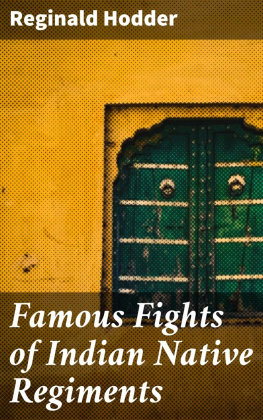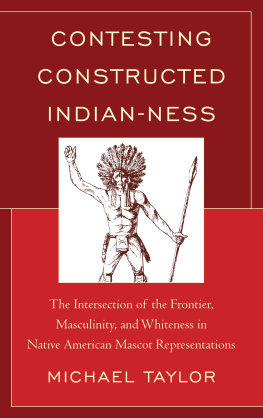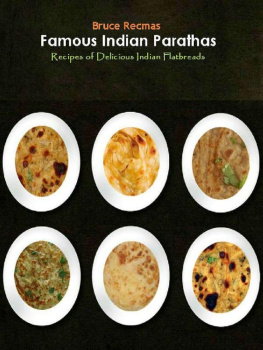ORDER OF THE DAY.No. 1.
Soldiers of the Indian Army Corps ,
We have all read with pride the gracious message of his Majesty the King-Emperor to his troops from India.
On the eve of going into the field to join our British comrades, who have covered themselves with glory in this great war, it is our firm resolve to prove ourselves worthy of the honour which has been conferred on us as representatives of the Army of India.
In a few days we shall be fighting as has never been our good fortune to fight before, and against enemies who have a long history.
But is their history as long as yours? You are the descendants of men who have been mighty rulers and great warriors for many centuries. You will never forget this. You will recall the glories of your race. Hindu and Mahomedan will be fighting side by side with British soldiers and our gallant French Allies. You will be helping to make history. You will be the first Indian soldiers of the King-Emperor who will have the honour of showing in Europe that the sons of India have lost none of their ancient martial instincts and are worthy of the confidence reposed in them.
In battle you will remember that your religions enjoin on you that to give your life doing your duty is your highest reward.
The eyes of your co-religionists and your fellow-countrymen are on you. From the Himalayan Mountains, the banks of the Ganges and Indus, and the plains of Hindustan, they are eagerly waiting for the news of how their brethren conduct themselves when they meet the foe. From mosques and temples their prayers are ascending to the God of all, and you will answer their hopes by the proofs of your valour.
You will fight for your King-Emperor and your faith, so that history will record the doings of India's sons and your children will proudly tell of the deeds of their fathers.
JAMES WILLCOCKS,
Lieut.-General
Commg. Indian Army Corps.
Camp , Oct. 10th, 1914.
INTRODUCTION
Our native army in India is principally composed of Sikhs, Pathans, Punjabi Mussalmans, and Gurkhas. Each of these races has acquired in its own way a high reputation for valour and martial skill, and it need not be doubted that the men drawn from these sources in the East to confront a relentless foe in the West are absolutely reliable.
Quite a third of the Indian Army is composed of Sikhs. They are not exactly a race, but are a military and religious caste, the only modern importation into their religion being a savour of socialism. The Sikh sect dates from the fifteenth century, when Baba Nanak raised them, so to speak, from the indiscriminate mass, to governing positions in the Punjab. This was partly owing to their strong religious sentiment, but principally to their military capabilities. In course of time, they came to dominate the whole of Northern India, and reached the height of their power under the Maharajah Runjit Singh (17801839). The Sikh wars of 18456 and 18489 are a matter of history. In these both British and Sikhs fought with the utmost gallantry. But, since 1849, the brave Sikhs have been loyal British subjects, and have fought on our side not only in the Indian Mutiny, but in Abyssinia, Afghanistan, China, Burma, Somaliland, and Tibet. At the present time, the Indian Army includes thirteen Sikh battalions, and there are one or more Sikh squadrons in each of the cavalry regiments, as well as a company or two in each of the infantry battalions.
The Khalsa Sikh is the beau-ideal of everything high and noble in the Sikh race. Stirred by the depths of his own religion, he fought and conquered at its behest. And to him is owing the high reputation and romantic popularity of an honoured name. The Khalsa Sikh is derived from many different castes, but principally from the Jats of the Punjab, whose character has responded to, and whose development has been moulded by, the self-reliant, warlike, and manly teachings of their ideal lawgiver and hero, Govid Singh, from whom their name is derivedthe word Sikh being originally Singh.
It is to the Jat element that the Sikh owes his most lofty characteristics. Thus the Jat Sikh respects himself wisely. His racial pride is based on the knowledge that he is justly, and without doubt, the flower of India. With him, as with all others who undertake great deeds in the present, the natural stimulus to such deeds is the stirring song of heroic achievements in the past.
The Pathans emanate from the Afghan race, and inhabit the hills of the north-west frontier of India. While many of the clans are Shiahs, the majority are orthodox Mussalmans. These Pathans, who frequently figure in novels dealing with Indian life, are, in their way, romantic figures. They are not only tall, handsome, and striking in appearance, but they have also a very independent character, obeying discipline for discipline's sake, and their officers for love of them. It is very strange that their facial characteristics are decidedly Jewish in type. It may be asked why there are only Company regiments, and no Class regiments of the Pathans. The reason is that, while they do not possess all the qualities which make for the complete efficiency of the Class regiment, they have unusual merits which are a very desirable leaven to almost any body of fighting men. They are certainly an admirable factor in combination with Sikhs and Punjabi Mussalmans.
The Punjabi Mussalmans were the original inhabitants of the Punjab, and their strong characteristics are still uppermost in that province. By race they are both Rajput and Jat, but their clans are many. From their wealthy families are recruited many fine cavalry regiments. They have a particular leaning towards mountain cavalry work, and this tendency has been fostered by the Government. Taking them all round, they are most efficient and courageous soldiers, and their attachment to their officers is proverbial.
As to the Gurkha, he needs but slight introduction. He is, so to speak, the "Little Benjamin" of the force from India, and excites great interest by his high courage and remarkable skill.
When the Gurkhas were told that they were wanted to fight in the great war they asked, "Shall we all be killed?"; and the officer said, "Not all." They inquired, "Shall a great many be killed?" He replied, "Possibly." Then they asked, "Will a hundred come back?" "Perhaps so." "That will be enough," they said; "our people will know that we have fought well."
The Gurkha's skill with his kukri is so remarkable as to appear absolutely unerring. Given a human marklet us say in the shape of a Germanhe can take off his nose or ear, or pierce his eye with deadly precision. No knife-thrower in the world can so accurately and closely fence in a man standing against a wall as can a Gurkha with some twenty kniveswithout drawing a drop of blood. A soldier writing from the front concludes his mention of these terrible little men with the passage: "God help the Germans these men come across, for nobody else can. Death to them is a pastime." Yet, though the art of throwing the kukri is perfection itself among the Gurkhas, it must not be supposed that they make a practice of throwing it at the enemy. They would not run the risk of losing the beloved weapon for the sake of killing one German.
The well-known fighting races inhabiting the Punjab, such as the Sikhs and Pathans, are supplemented by a considerable number of smaller fighting castes. All these are either of Rajput, Jat, or Tartar descent; but, being mostly Mahomedans, they are prone to claim Moghul or Arab origin. Though not very distinct from some of the more unwarlike Punjab castes, they have, at some period of their history, displayed enough valour to acquire the ascendancy over neighbouring districts, and the memory of this has given them that pride of blood and race and that spirit of self-reliance which so largely constitute the martial instinct. The smaller Mahomedan fighting tribes of the Punjab are often grouped together under the generic term "Punjabi Mahomedan."









